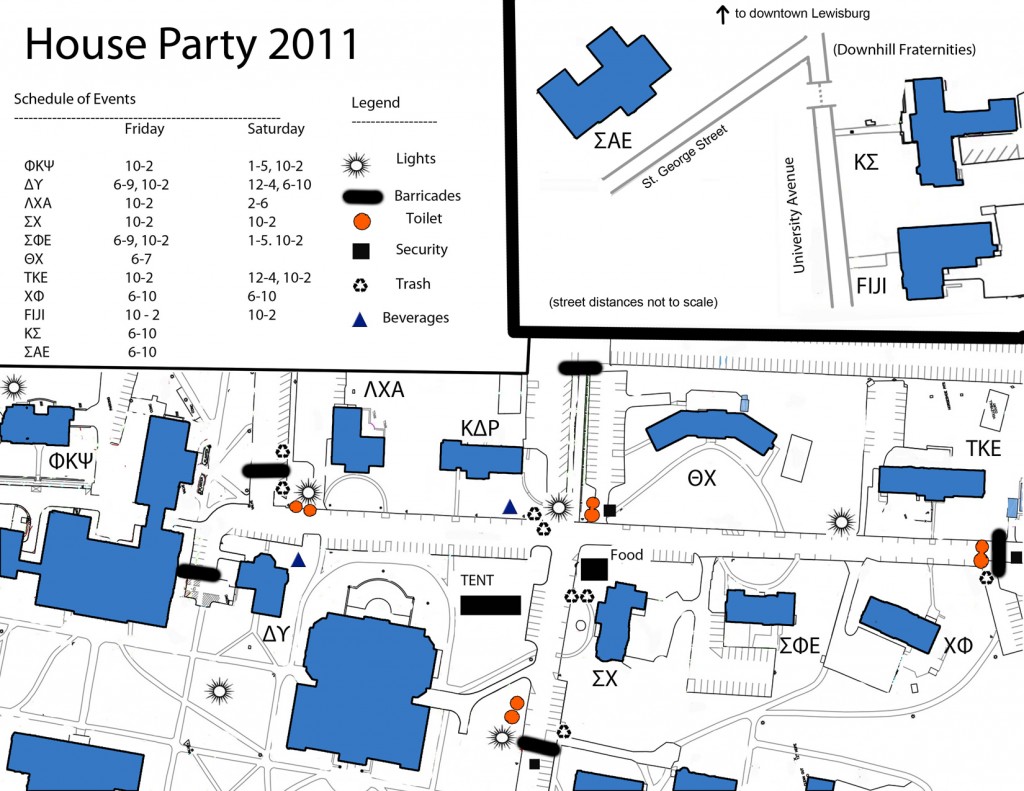By Eric Soble
Senior Writer
After three successive failures, Egyptians had almost made it across the October 6 Bridge from Zamalek, the small island nestled in the heart of Cairo. The bridge had created a bottleneck for the protesters, an obstacle before Tahrir that proved difficult to pass. Tear gas rifles popped in and out of rhythm, rubber bullets shot at close range, circles of Egyptians dragged bodies back from the bridge and handed them into ambulances.
All I could think of was that other study-abroad students in Europe were looking at thousand-year-old statues and casually observing Impressionist paintings. A weird thought for the time, I admit, but a thought that still stays with me.
I was with six other American students on Jan. 25. We were living in downtown Cairo in a small dormitory, fresh off the plane from JFK Airport, still learning our salutations in colloquial Arabic and getting accustomed to the general cacophony of the city.
As we walked down the Nile towards Tahrir Square on that Saturday, we realized the full extent of security detail. In every side street, there were barricades and around 30 policemen stationed at intersections. In front of the state-run media building, there were approximately 200 policemen in riot gear. This was a powerful aesthetic of oppression: the police guarding this tower symbolized the insane extent the government went to in order to maintain its power over the people.
A woman told us that we should leave the region along the Nile. This became increasingly obvious as we witnessed the beginning of the revolution. We had hurried onto a hotel roof to watch the beginning of what would be a multi-week affair.
The fight for the bridge seemed to last forever. Water trucks blasted water at a high velocity into the crowds. Egyptians hugged the ends of the bridge. Police were intent on holding their position and continued firing rubber bullets and tear gas canisters. These canisters would rise high in the air and fall to the ground quite suddenly, making them dangerous in more ways than one. A few of these canisters landed in the hotel, catching fire to some furniture. Tear gas clouded the roof of the hotel, and we had to go inside to escape it.
Tear gas is rancid. Water and masks don’t help; many protesters used vinegar on their keffiyehs, which seemed to work sometimes. It burns both your eyes and your throat and makes it absolutely impossible to see.
In the lobby of the hotel security guards were blockading the entrances. A protester had suffered a major wound to his head and was bleeding profusely. Police were directly outside, pushing back protesters and setting up blockades on the roads leading to Tahrir. It seemed we were stuck.
Once the line at the bridge was broken, chaos ensued. People in the front of the protest charged the police, forcing them to retreat from their previous positions. Egyptians broke curbs apart to make stones able to be thrown. They broke down guard stands (in Cairo, there are small individualistic pods for guards to stand in) and rolled them towards the police. People took control of the water trucks and pointed the hoses in the air. Egyptians overtook the military vehicles. Fired tear gas canisters were either thrown back at police or pitched into the Nile by brave Egyptians.
The sun faded behind the palm trees of the Nile. Some in our group wanted to stay in the hotel, but we ultimately decided to brave it back to our dormitories. The 30-minute walk proved quiet enough; there was no one in the streets because Mubarak had declared a curfew, but in the distance we could see the explosions of Molotov cocktails and hear the firing of guns. I have not forgotten the yelling and chanting that seemed to flow over the rooftops. Shouts of “huriyya, huriyya” (“freedom” in Arabic) continued throughout the night.
All the students in the dorm were crowded around the television in the main common room. The news was haunting: almost 100 killed, with thousands injured. We all stayed up early into the morning, listening and watching as the city outside of our door erupted. Egyptians, after 30 years, were demanding their rights without concession—and they didn’t plan on giving up any time soon.
The immediate effects of the protests were tangible, even in the early hours of the morning. The streets were empty; stores had either been ransacked or were closed. Broken glass was everywhere, and it seemed that the stores that were open had moved all of their goods inside, where they were less likely to be stolen. The grocery store, Metromart, was the only store of its kind that remained open. Most of the meat was gone, and there were no fresh vegetables.
Cairo had effectively come to a standstill. The government had shut down the Internet and all phone services. A few of us decided to go down and take a look in Old Cairo, off the island of Zamalek. Small pockets of protests were still going on, but the army had arrived and proved less hostile than the police. Oftentimes, they would join the protesters in chants. They often allowed Egyptians to climb on top of tanks and hold the Egyptian flag high. The distinction between the army forces and the police—which act more like Mubarak’s personal security detail—was not a distinction that the U.S. and the U.K. media made.
One event that sticks out in my mind occurred as we were proceeding back across the Nile to return home. Protesters were streaming the opposite direction towards Tahrir Square. Bullets from the previous night were strewn across the bridge. An Egyptian man suddenly began picking up these bullets as we approached, and he pointed to the blunt end of the bullets, saying “Look, American … America” in Arabic. As it turns out, the very bullets fired against the demonstrators were made in the U.S.A. I have never felt so disappointed in my country.
The next day, the State Department began evacuations. Buses lined our dorms as students swarmed to catch a bus to the airport. Leaving Cairo was like exiting a war zone. At every turn, there were huge tanks with handfuls of troops. One doesn’t really understand how gargantuan a tank is until it is up close. The streets were still relatively busy, but the tension was tangible. As the bus went up an incline near Suleiman’s castle in Cairo, I caught my first—and only—glimpse of the pyramids. After a split second, they were consumed by the foreground of Suleiman’s castle. I would leave Egypt without visiting its flagship institution.
The State Department evacuation line extended past the airport. There had to be a thousand people in this line that showed no signs of movement. We unloaded our baggage and queued for a plane. We only knew that we would be evacuated to one of three locations: Athens, Istanbul or Nicocea. We waited for 10 hours. As it happened, my plane landed in Istanbul. I had Internet, food and phone service. I ordered what seemed like the best pasta I had ever had. As I contemplated what I was to do for the next three months of my life, I turned on the television to see Egyptians still gallantly fighting. My heart ached for what had been my home for only two weeks. As is inscribed by Ramses II on Queen Nefertiti’s tomb, “My love is unique and none can rival her … just by passing, she has stolen away my heart.” I hope I will visit Egypt soon. May she be in better health and without her previous government.
[Editor’s Note: Eric Soble is currently located safely in Morocco and will continue his semester abroad there.]

